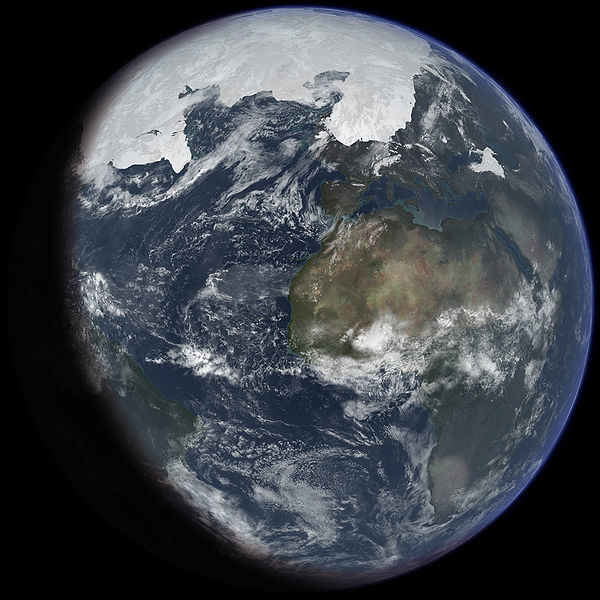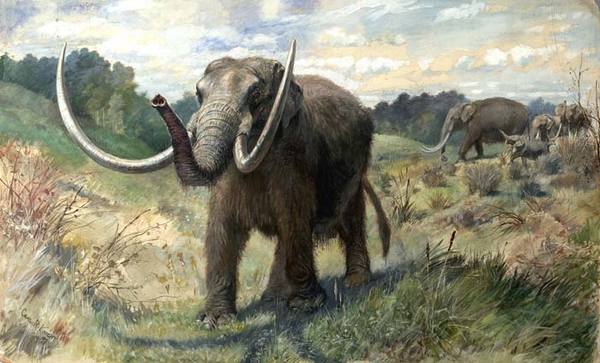| << Chapter < Page | Chapter >> Page > |

During the Quaternary, the Earth has cycled between glacial periods (sometimes referred to as "ice ages") and interglacial periods . The ice was at its most recent extreme around 20,000 years ago in a period known as the Last Glacial Maximum , or LGM. As we can see from the ice core record, the Quaternary climate is usually cold (see Figure Ice Age Temperature ), with long periods of cold punctuated with shorter (10,000 year long, or so) periods of warmer conditions, like those we experience today. In many ways, our current climate is exceptional—for most of human existence, the Earth has been a much colder place.
What was the Earth like during these glacial periods? Almost all the world was cold; average temperatures were around 6 o C (-13 o F) colder than today. Such conditions allow ice sheets to grow—much of North America, Asia and Europe were covered under mile-thick ice (see Figure Ice Age Earth ). Because this ice was made of water that was once in the oceans, sea levels were much lower. At the LGM, sea level was about 120 meters (or about 400 feet) lower than it is today. As the seas retreated, the continents grew larger, creating land bridges that joined Asia with North America, Britain with Europe, and Australia with Papua New Guinea.
During glacial periods the climate was also much drier, as evidenced by the increase in atmospheric dust (Figure Vostok Petit Data ). The lands at and near the poles were covered with ice, and dry grasslands occupied areas where temperate forests occur today. Deserts were much larger than they are now, and tropical rainforests, having less water and less warmth, were small. The animals and plants of glacial periods were different in their distribution than they are today, as they were adapted to these different conditions. Fossils of Mastodons (Figure Knight Mastodon ) have been found from all across what is now the United States, including from Florida, which currently enjoys a subtropical climate.

During glacial periods humans would have been unable to occupy the globe as they do today because all landmasses experienced different climactic conditions. Some countries of the present could not exist, as they would be almost completely covered by ice. As examples, look for Canada, Iceland and The United Kingdom in Figure 800pn Northern Icesheet .
Why has the Earth cycled through hot and cold climates throughout the Quaternary? As we learned in the previous module, the Earth's climate is controlled by several different factors—insolation, greenhouse gases, and albedo are all important. Scientists believe that changes in insolation are responsible for these climate swings, and the insolation varies as a result of wobbles in the Earth's orbit.

Notification Switch
Would you like to follow the 'Sustainability: a comprehensive foundation' conversation and receive update notifications?